There are many things you can do when you are challenging (or being challenged by) a competing radio station. One of them is being different enough, music-wise.
Following part 1 of our talk with radio music scheduling expert Keith Hill, we now cover additional best practices of music programming, including tactics & strategies for competitive broadcast markets. It’s good to build a unique music image and claim (the discovery of new) songs that only you play. “If it’s real ear candy, being new is not an anomaly.”
“That’s the ‘wow’ you wanna’ evoke”
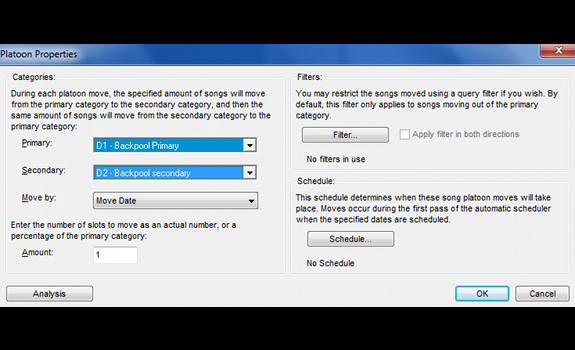
Platooning keeps you sounding fresh by parking & returning songs on a regular basis (image: A-Ware Software)
Invest in larger samples
Music radio goes hand in hand with music research. What do you see as its dos and don’ts?
“It’s difficult to do quality music research. There’s basically one kind of it; stimulus-response. We don’t have time to play all of Stairway To Heaven to let people vote ‘favorite’, ‘like it’, ‘so-so’, ‘don’t like it’, ‘tired of it’ or ‘unfamiliar’. So we play a hook, and they respond.” He feels like some songs just cannot be hook-tested. “If you’ve got a story song, a hook doesn’t really get to what it is. It’s a book or movie in 3.5 minutes!” Another challenge is a low (budget) sample rate: “If you don’t have 500 to 600 people in your sample when doing a music test, you’re wasting time and money. If you’re programming a station in Charlotte, North Carolina with 1.000 Portable People Meters out there, and you bitch and moan about your ratings – why would you ever be happy with 150 people in a room, scoring your records?” In his opinion, online music testing may not be the best alternative, as it’s difficult to control who is taking the survey (as well as where, when and how). Then there’s the question of how to sort out the “millions and millions of data points” as a result.
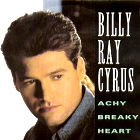 Use the right multipliers
Use the right multipliers
Hill credits Mike O’Malley and Jay Phillips to first use the formula: (favorite x 2) + (like x 1.5) + (so-so x 1) to determine a good ranking order. “That would be how I’d get my powers, mediums, lites, and burn. Jaye Albright stood up at a Country radio seminar once and said: we’ve only burned one record in our format history, it’s Achy Breaky Heart by Billy Ray Cyrus!” Personally, he slows down or completely removes a song once it’s reached a 15-20% burn level.
Refresh your playlist systematically
What do you think of platooning as a way to keep your playlist interesting and surprising?
“I love platooning; it gets to that whole concept of focusing on your P1s who listen to your station every day, for multiple hours a day.” He explains how he platoons a music playlist: “Every 30 days, pull up the most-played songs, skim off 10 to 15 from each category, and park them. 30 days later, move them back in, and take out that month’s 10 to 15 most-played. People won’t miss a song, but when you bring it back, they go: I haven’t heard that in a while! That’s the ‘wow you wanna’ evoke.” Some music scheduling software does allow auto-platooning, based on a defined number of spins and period of rest: “You can platoon your powers every 3 weeks on a Thursday, and your regular golds every 3.5 weeks on a Friday.” He finds that platooning is most effective when songs are rested for 3-4 weeks, and adds that your music library size (as discussed in part 1) is based on the number of songs in active rotation at any given time. “I don’t consider the parked records as part of that turnover number.”
“Play your most powerful records”
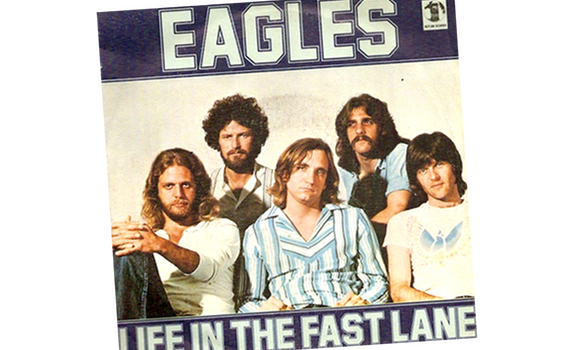
Even if you would play the same classic hit several times a day, most listeners won’t notice it (image: Asylum Records)
Put (P1) listeners first
There’s also a thing called flow, and keeping jocks motivated with an up-tempo song out of the Top of the Hour or, after having a contest winner on air, not play Everybody Hurts from R.E.M. but rather Shiny Happy People.
“There’s value in some of that. If you want an up-tempo song after the commercial break, do it! But don’t be too concerned about jock complaints, because they’re more than P1s; they are the radio station for 3; 4; 5 hours a day.” The switch from diary to PPM exposed how listeners actually use radio: “We used to think that we had ‘9-5 listeners’ at work for like 8 hours a day. We had an average Time Spent Listening of 14; 15 hours a week!” Keith Hill recalls that when they went to PPM, the longest TSL of the most heavy listener turned out to be 4.5 hours a day – and this person’s listening pattern was not linear, but fragmented.
 Play core artists regularly
Play core artists regularly
Because at-work listening is being interrupted by phone calls, team meetings and lunch breaks, the only people who hear a station 24/7 are the people at the station. So he even used to play songs from a certain superstar artist at a fixed format clock position – right after a certain commercial break – not expecting anyone to consciously notice it. He adds that people might connect artist & stopset if (too) outstanding imaging precedes the song.
Spin top songs often
Instead of being afraid of individual listeners and disc jockeys complaining about ‘repetition’, Hill’s advice is to think about radio like you have just 1 hour of programming every day, instead of 24 hours. “What would you do? You would probably play your most powerful records. If the Eagles’ Life In The Fast Lane is your best-testing classic, go play it three times a day! Show me the listener who listened at 6 AM, noon and 6 PM – and I’ll show you the listener who listened too much.”
“I would never stop
for longer than 3 minutes”
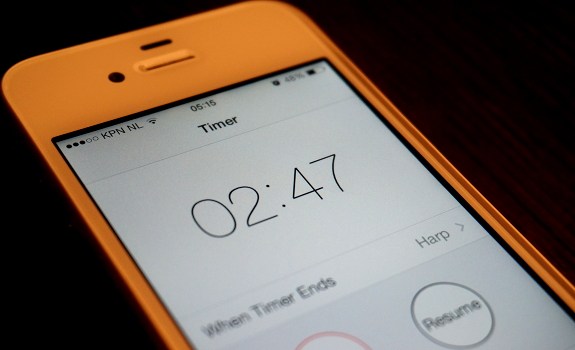
Instead of airing commercials in less (but long) stopsets, rather use more (but short) breaks (photo: Thomas Giger)
Position music against commercials
Some programmers believe that most listeners schedule their daily appointments at the top & bottom of the hour, so they schedule commercial breaks strategically at those moments, to keep listeners happy with long music sweeps in between. American PDs have to protect certain quarter hours in PPM, so they use a different strategy. What are the best stopset positions in your opinon?
“It depends on whether you’re a dominant or a weaker station. If you’re dominant, it doesn’t matter, and if you’re weaker, you need to be in music when the other guy’s in commercials. If you were the dominant Top 40 station and I was the second-rated Top 40 in the market, where my stopsets are would be dictated by you. I would try to precede your commercials. You might get some of my listeners, but so what – I’m not sending that many to you.” He thinks that what matters most, is that the spots work for the advertiser.
 Stop more, but shorter
Stop more, but shorter
Keith Hill opposes commercial breaks of 5 minutes or more. “It abuses our two constituencies; our two customers – those who listen to spots, and those who pay for them. Would you really want to buy commercials that were the fifth in a break?” His advice is to have more stopsets, but shorter breaks of just 3 or 4 (30-second) spots each. “Now you’ll never be more than 2 minutes away from the music starting up again. It’s good for everyone.”
Make more with less
On the other hand, you’re now constantly interrupting your music flow, whereas on other stations – following a relatively long commercial break – people might get almost an hour of non-stop music.
“Yes, but they don’t listen for an hour. We live in short-attention-span world.” His preference is to simply run fewer spots and raise the rates. If we’re running 10 commercials an hour at $100 each, let’s have 8 spots at $150. We make more money, and it’s better for the audience and advertiser.” His suggestion is to have 4 stopsets, evenly spread throughout the hour, containing 2 (60-second) units. With 6 minutes an hour, you could stop 2 x 3 minutes; with 9 minutes, 3 x 3 minutes. “I would never stop for longer than 3 minutes. Some stations where I’ve worked, did: record, spot; record, spot – some greedy ones had 1 song, 2 spots; 1 song, 2 spots. But radio was very meaningful; lots of fun, lots of contests, lots of personalities… and radio was introducing lots of new music, not worrying whether it tested well or not.”
“The density of power artists
can be very meaningful”

Depending on music format and star power, artist repetition can be a good thing (image: Fansshare / Jeannette38)
Be condensed, but diverse
We touched upon Time Spent Listening. How to get people to listen longer through music scheduling strategies? Does your TSL mainly depend on music variety, or are there also other music factors?
“Time Spent Listening is a function of playing great records that are well-scheduled, and of variety in the composition of those records. In the past we wanted all songs to sound similar, so there was a cohesive brand sound. In PPM, we’ve learned it was a mistake.” Hill points out that while variety is key, it’s not about how many songs you play as “you don’t want to add songs to accomplish variety”. Rather include several different sounds in your format: “I get my variety by stretching that rubber band of sound. I’m looking for different sounds in my playlist; not for a long playlist.”
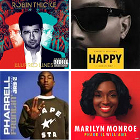 Ensure good artist separations
Ensure good artist separations
How do you deal with core artists like Pharrell in Top 40, with many current and recurrent hits in which he stars, not to mention the ones in which he’s featured or which he’s produced?
“This also happened with The Beatles, Madonna, Michael Jackson and Lady Gaga. I do believe you can put multiple songs [by the same artist] in ‘currents’, just make sure that they’re well-spread.”
Schedule 50% power songs
Keith Hill notes that power artists make your format strong, and should therefore not be positioned too far apart. “We know these Katy Perry, Lady Gaga, Bruno Mars and Pharrell records are performing incredibly well. It’s one of those jock-isms to say: I’ve had two songs by the same artist in the same hour! But you know what? I’ve seen number 1 stations with an artist separation of 20-30 minutes! It doesn’t mean that if you’re a Gold-based and have two songs by Cat Stevens – Morning Has Broken and Peace Train – you should play them in the same daypart or day. It’s a situational thing. But the density of power artists can be very meaningful.” He agrees that playing at least 50% powers is a good rule of thumb: “It also makes it easier to build clocks where every other song is a power of some kind. Heck, that’s a great formula.”
“It’s one of those jock-isms to say:
I’ve had two songs by the same artist in the same hour!”
“I might go to Bruno Mars and say:
record me a couple of songs”

Having core artists record station-exclusive (versions of) hit songs can be a competitive music USP (image: Fanpop)
Focus on core listeners
As a program & music director, you want to satisfy your P1 audience. But you might also like to gain new listeners and build your cume – attracting occasional listeners, and making both your P1 and P2 listeners tune in more and listen longer over time. How do you balance between serving your core and broadening your format?
“I lean towards the first: – satisfy your P1s. If you want to provide a profile of unpredictability, a super-lunar category has got some real value in some formats.” He feels like these ‘wow’ songs (or ‘spice’ songs) can have value in a competitive situation, as long as they are programmed well.
 Include slow-rotating spice songs
Include slow-rotating spice songs
The idea is to have many songs in a category that appears just a few times a day – and to combine this with a smart daypart rotation. A certain spice song might play on a Monday morning in January, and then again on a Wednesday midday in February. Hill advises to always pre-sell this sort of rare records. “I’d put a liner or jock in front of it that says: wow, here’s some fun for ‘ya! We went to the back of the stack, and dusted it off.”
Counter-program against competitor attacks
What if you’re a heritage CHR like Z100, and I’m a new kid on the block like AMP Radio, attacking you with a similar playlist. You play 140 songs; I’m running 120. You spin Bruno Mars 80 times a week; I’m playing him 100 times. What would you do as a PD or MD?
“I’d do a lot of things. I would play only half of the list on certain days of the week – talking about fast turnovers! On the weekend, I might just play my powers, so the rotation is just half the time. I would go to the sales department to get an All-Music Monday with no commercials at all, or 1 sponsor message like: ‘this hour is brought to you by’. I’d get artists to the station, and have them record acoustic versions with my call letters in it. And I would play some things that you don’t play; find really great songs and make hits out of them. I might go to Bruno Mars and Pharrell Williams and say: record me a couple of songs that you only give to me. I would even pay for it.”
“Find the next big thing”

(Claiming) self-discovered new music helps you to position your format better (image: YouTube / A-Ware Software)
Sound tight, but fresh
What about other way around? Let’s say you’re a newcomer in a tough market like Los Angeles, going up against established competitors such as KIIS-FM. How to stand out in terms of music scheduling from a challenger’s point?
“I’m not sure there’s a music scheduling trick, other than shorter and tighter”, says Keith Hill, adding that some audience interaction might work – like listener-driven radio bits where people can pick the next song. “But the most important thing if I’m in second place, is just to be so much tighter. It would be the records that I wouldn’t play, that would make a difference. I’d cut the list in half and be super-me. I’d also try to be on the leading edge of new music; find the next big thing. Yes, new songs are unfamiliar, but do you remember the first time you’ve heard some records? You went: wow, what a great song! Listeners have that response, too. If it’s sonically interesting and real ear candy, being new is not an anomaly.” [ See also part 1 ]





Great article! Keith Hill is the best UnConsultant there is!